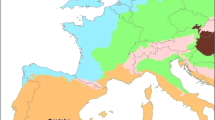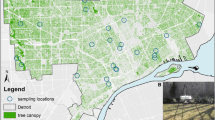Summary
During the pollen season, a daily account of airborne pollen is reported by radio and newpapers in Denmark as «Today's pollen count». The Aerobiological Group under the Danish Asthma and Allergy association is responsible for the daily identification and counting of pollen. In 1984 the Group set up a trial to investigate the reproducibility of the pollen count.
Three trained pollen counters independently examined the same specimens from two Burkard pollen traps. The traps were located on the roof of the Meterological Institute in Copenhagen 15 meters above ground level in the northern outskirts of central Copenhagen. This is the usual sampling site. Specimens from each trap from 20 days during the grass pollen season were selected. Four species groups were identified in sufficient numbers for statistical analysis. These were, in order of occurrence, spruce/pine (Picea/Pinus), grass (Poaceae), nettle (Urtica) and mugwort (Artemisia).
Identification of sources of variation and assessment of their relative importance were carried out using variance components models. A detailed account of the method is given.
Qualitatively equivalent conclusions were reached for each group: i) The expected seasonal variation was identified; ii) The counters contributed significantly to the variation of pollen counts; iii) The traps did not contribute to the variance, but a day-trap interaction was identified. This interaction was interpreted. as a problem of instrumental variation over time of traps of variation in meteorological conditions; iv) The total variance was larger than originally expected. The relative uncertainty was greater than 50 per cent.
The variance of the daily pollen count cannot be reduced much by reducing counter variation or day-trap interaction. The variation among pollen counters is small, and the day-trap interaction is difficult to fully comprehend. The basic measurement error can be reduced by examining a larger area of each specimen. Although this implies a greater cost, it is probably the most effective method of reducing the uncertainty of «Today's pollen count».
Similar content being viewed by others
References
Goldberg C., Buch H., Moseholm L., Weeke E.R. (1988) —Airborne pollen records in Denmark, 1977–1986. Grana,27:209–217.
Graem N., Helweig-Larsen K, Keiding N., (1980) —Precision of histological grading of malignancy. Sources of variation in a histological scoring system for grading cancer of the larynx. Acta path. microbiol. scand. Sect. A,88:307–317.
Scheffé H., (1959) —The analysis of variance, Wiley, New York.
Tjur T., (1984) —Analysis of variance models in orthogonal designs. International Statistical Review,1:33–81.
Author information
Authors and Affiliations
Rights and permissions
About this article
Cite this article
Pedersen, B.V., Moseholm, L. Precision of the daily pollen count. Identifying sources of variation using variance component models. Aerobiologia 9, 15–26 (1993). https://doi.org/10.1007/BF02311366
Issue Date:
DOI: https://doi.org/10.1007/BF02311366




